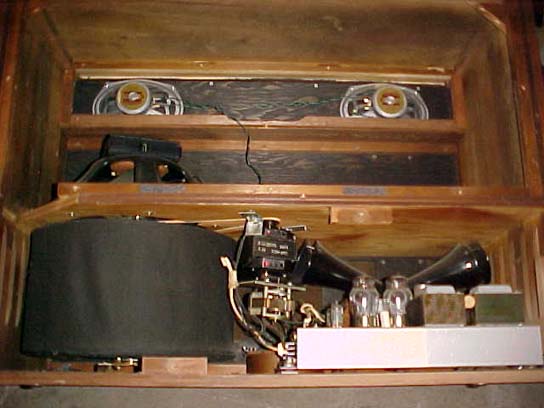| Ladies and gentlemen! With the help from, among others, Harvey Olsen and Dave Hallam I'm proud to present: | |
|
|
|
|
The decorator style Leslies, sometimes named 'low boy' types, were aimed at the home market. They came in, at the time, very fancy and innovative cabinet styles with more home friendly dimensions. The resemblance to a 60's style home stereo system is not totally off target. The basic idea of these cabinets were that the compartment for the bass speaker was placed beside the rotor section - not under as in the ordinary Leslies. These beauties were first introduced in 1966-67. If you know your Leslie history you'll know that at this time there were yet no solid state Leslies and all Leslies were two-speed. The basic models suitable for Hammond organs then boiled down to: 122, 147, 251, 145, 142 and 125. In addition came the reverb models 122RV and 147RV. As mentioned in The Tall Boy Section the model number of a decorator Leslie can be calculated by simply adding 100 to 'normal' model number. |
|
|
Model names and features 222
Balanced input, made especially for Hammond consoles. 222RV/247RV
Reverb versions of models 222 and 247 respectively. They include reverb
unit, amplifier and speakers. 242 Same electronics (and almost the same mechanics) as model 222/122 but in a smaller cabinet(see picture below). 245 Same electronics, and again almost the same mechanics, as model 247/147 but in the smaller cabinet like the 242. 225 A nifty home version of the small 20W/single rotor model 125. Model 245, 242 and 225 were introduced a year or so later than the larger horizontal models. Elctro Music issued a supplement to the Leslie 122 service manual, covering model 222 and 222RV. You can download a scan here.
|
|
|
Now for some pictures..
|
|
|
|
Here is a picture of a model 247 in its 'natural surroundings'. This and the following picture are courtesy of Mr. Dave Hallam of Cape Town, South Africa. |
|
Frontal view of the 247. Note the great finish on this cabinet and the other Leslie from Dave's colletion in the background. |
|
|
|
Not all of Dave's Leslies are this pretty ;-) As we can see, even living-room type Leslies can get worn and torn. This is a Leslie 222. |
|
The 222 from the back. It is pretty crammed below the lower shelf and there is very little clearance over the output tubes for the horn. The horn sits on a woodden platform (actually very similar to the one in the 30-series Leslies)behind the amplifier. |
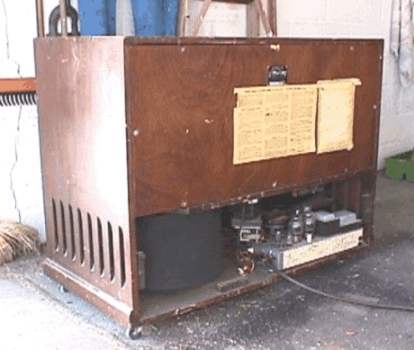
|
| A close-up of the lower compartment in the Leslie 222 cabinet. (This and the following picture kindly supplied by John Ledwon of www.organhouse.com) | |
|
|
|
The 'low boy' cabinet of the 222/247/351 should be operated with the lower back cover in place at all times. This is because the lower shelf has a tendency to sag, and due to the tight quarters below the shelf, there is a risk that either the rotor or the horn could scrape against the 'ceiling'. If it is deemed best to operate the Leslie without the back on (sound distribution and/or cooling concerns), I would recommend that some sort of brace is fitted around where the motor stacks are located. |
|
Model 351 |
|
 |
The two-channel model 351 looks exactly like the other models in this series, so I will have to take Dave's word for the authenticity of the picture :) Note the spot on the middle panel - it is not a blemish in the finish, it is in fact a tiny Leslie logo in gold lettering. |
|
Here is a Leslie 351 from
the back, showing the two 6x9 speakers in the front baffle.
|
|
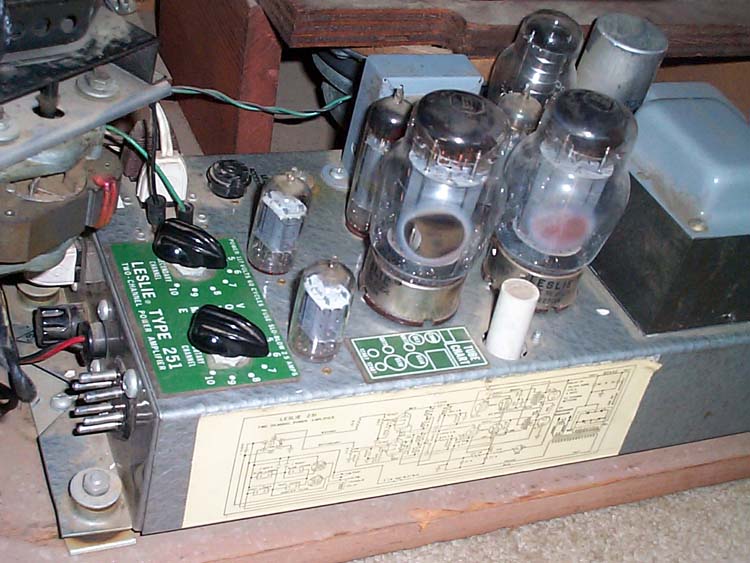 Mike Casino, U.S.A., kindly supplied this and the following Leslie 351 pictures. The above picture shows a close-up of the amplifier, clearly marked TYPE 251. Note the labels on the amplifer are green. This indicates that the connection interface is of the 'Conn' or 6C type. |
|
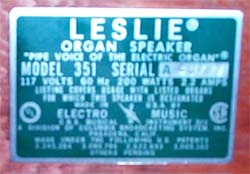 |
Here is the tag from Mike's Leslie 351, also green. |
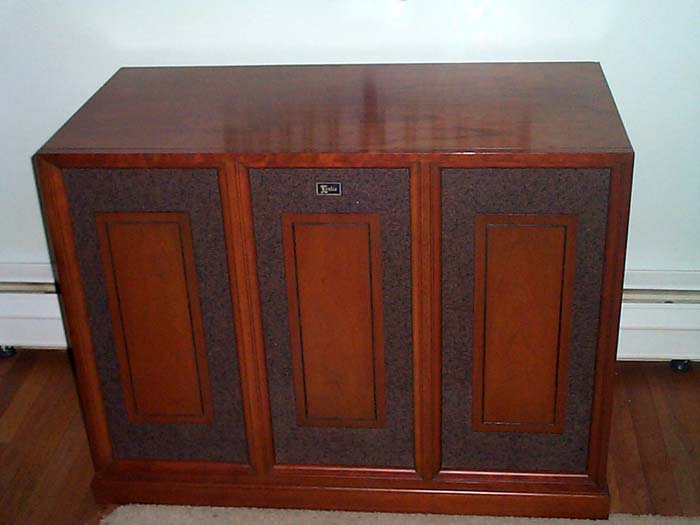 Beautiful wood |
|

